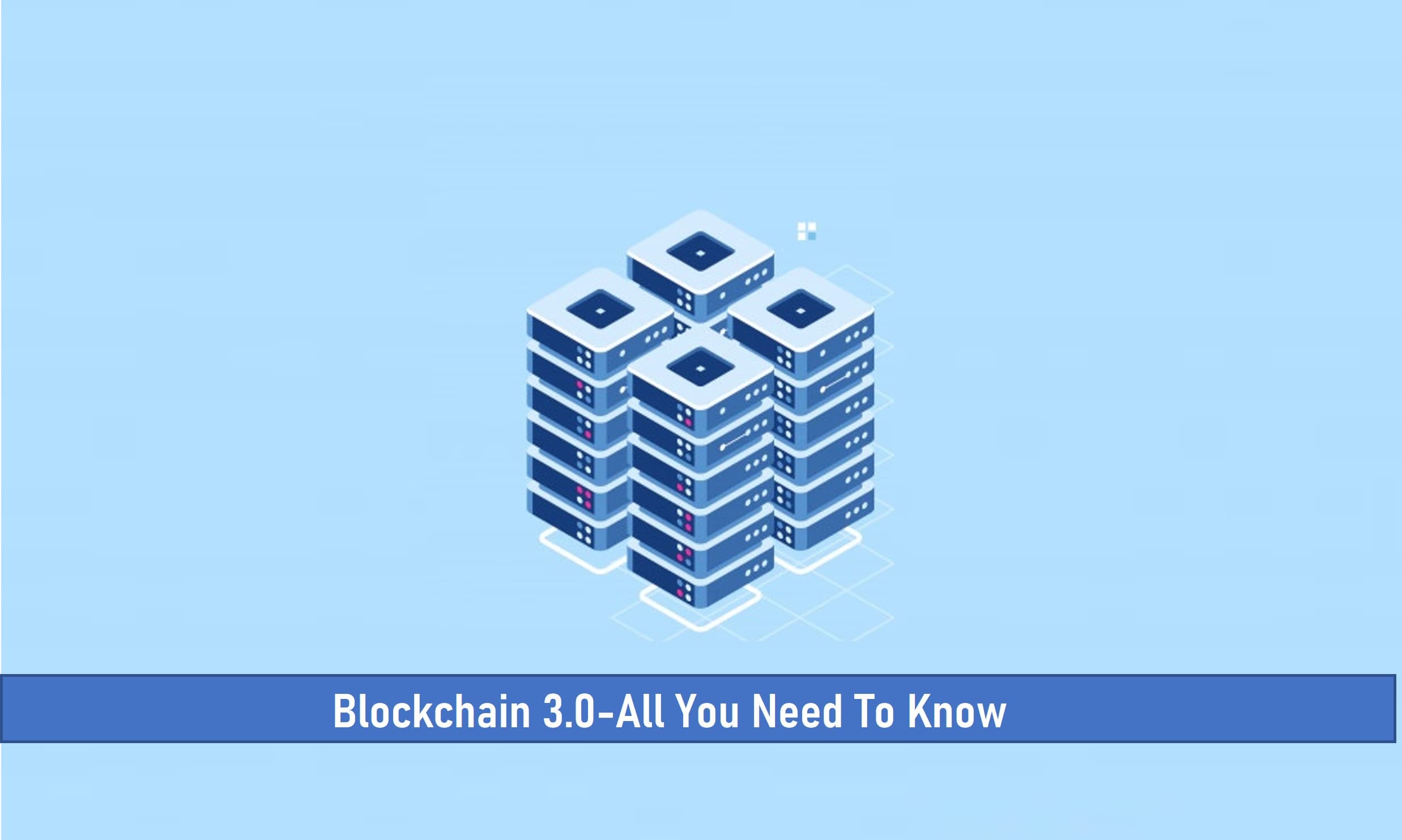
As a crypto investor, chances are that you have probably heard of blockchain technology. This technology serves as a basis for the existence of cryptocurrencies and also provides an alternative to the traditional monetary system.
From blockchain 1.0 to blockchain 3.0, several improvements have been made along the way to rectify some of the loopholes found in blockchain technology.

Key Takeaways
• With blockchain 3.0, non-financial sectors would be able to tap into the resources and be able to process information and other activities at a faster rate.
• The blockchain from time past has been a public record of data without user privacy, which is about to change as new blockchains created by cryptocurrencies begin to incorporate privacy features into them.
•With the layer-two solution to transaction speed and time, certain crypto blockchains will be able to process higher transactions at a much faster rate.
• The blockchain as a tool is capable of providing several benefits as it can safely secure a large database using a chain of the stored ledger while still maintaining record privacy.
SEE ALSO: Top 10 Cryptocurrencies With The Fastest Blockchains In The World
SEE ALSO: 8 Crypto Blockchain Consensus Mechanisms Available
SEE ALSO: 11 Best NFT Blockchains for Simple NFT Projects
Blockchain 3.0 for instance is focused on testing the limits of blockchains beyond the financial sector and making them available to businesses and industries worldwide.
In addition, blockchain 3.0 aims to tighten up on security and solve inherent issues in the technology such as scalability, cost, and interoperability.
In this article, I will be explaining in detail the reason for the existence of blockchain 3.0 and how it provides solutions to some of the problems inherent in blockchain technology.
Blockchain 3.0 – An Overview

Blockchain technology itself is a system of recorded transactions linked together through the use of cryptography and just like any technology out there, it comes with some weaknesses even though it has revolutionized the digital sector.
Some of these weaknesses include scalability, interoperability, and privacy which are very crucial and would need to be solved if blockchain is to cut across all sectors.
To see how blockchain 3.0 can solve these problems, let us take a look at each of them below:
Scalability
Scalability here means being able to be used in various capacities. Blockchain technology as you are aware is riddled with the scalability problem and this problem boils down to three major factors which are: cost and capacity, networking, and throughput.
By cost and capacity, I simply mean the ability of the blockchain to store a large amount of data on it.
While this may seem easy to achieve, not every node on the blockchain can achieve that which then makes it difficult to achieve.
For networking, every transaction done across the blockchain is broadcasted and this can consume a lot of network data which is why the blockchain needs a working mechanism for it to be able to consistently achieve this.
Lastly, throughput has to do with the time and the speed of confirming a transaction or transactions on the blockchain system.
Unfortunately, the throughput is quite low as can be seen by Bitcoin’s low throughput of seven transactions per second.
How Blockchain 3.0 solves this problem
Particularly for the capacity and throughput problem, blockchain 3.0 has been able to introduce the layer-two framework, a protocol that sits atop the first layer of the blockchain and that helps to transfer the number of transactions to a peer-to-peer network.
This layer two protocol works independently and relives some of these duties of the blockchain’s original layer limiting it to just its basic responsibilities such as blockchain control.
Some examples of this layer-two protocol include nested blockchains, channels of state, etc. You can click here to find out more about them in detail.
For the problem of scalability proper, some new blockchains are coming into the picture with a way of solving this problem through a protocol referred to as a consensus mechanism.
This consensus mechanism is attributed to the proof of stake and delegated proof of stake feature which was created as an improvement to the proof of work and why major crypto blockchains such as Ethereum are moving towards it.
Interoperability
This concept simply means the ability for different blockchains to be able to exchange data and assets from their networks.
Unfortunately, this has not been achievable in existing blockchains, and to solve this problem, new blockchains are being created with a specialty for interoperability.
Examples of these blockchains include Polkadot, Aion, and Wanchain.
These blockchains have made it their goal to provide a means of communication between blockchains so that you might be able to send crypto assets such as bitcoin across different blockchains.
Privacy
We all know how blockchain is a public protocol and how blocks of data on it can be viewed by just about anyone who wants to get into the details.
Well, some developers do not seem to be convenient with this and see it as a flaw in its creation.
As such, some cryptocurrencies have started incorporating the privacy feature into their respective blockchains. Some of these cryptocurrencies include Monero and Zcash.
It is also worthy to make mention that Wanchain and Aion also have embedded in their blockchain, privacy layers that offer some amount of privacy to users who make use of their respective blockchains.
Finally, understanding blockchain 3.0 is quite important, especially for what it holds for the future in the digital space.
But one thing is certain, blockchain 3.0 technology will be able to provide a technological tool for businesses and other sectors outside finance to work with.
Frequently Asked Questions (FAQs)
What is the fastest Blockchain?
The fastest blockchain will be the Bitgert Blockchain which is capable of attaining speeds of up to 100,000 transactions per second, faster than all other equally fast blockchains such as Solana, Cardano, etc.
Who created the Blockchain?
Satoshi Nakomoto is the first person to be attributed with creating the first blockchain which led to the creation of the first cryptocurrency, Bitcoin.
Final Thoughts
Blockchain 3.0 has worked to improve on the existing functionalities of blockchain 2.0 and blockchain 1.0.
Together with blockchain 4.0, it is working towards making the technology versatile enough that it can be used by businesses and sectors across all spheres.
Read More




